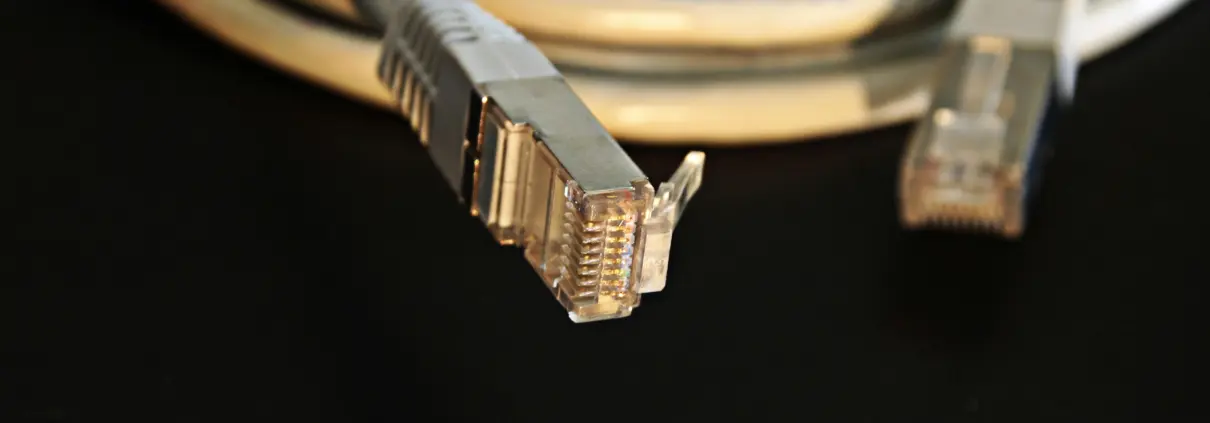What is an Ethernet Cable: Exploring its Purpose and Function
Ethernet cables serve as the backbone of modern networking, allowing for rapid data transmission within local area networks. Whether you’re setting up a home office or managing a corporate infrastructure with the help of competent IT technicians in Pennsylvania, understanding these cables is crucial. Since their introduction in the 1980s, Ethernet cables have evolved dramatically, jumping from modest 10 Mbps speeds to blazing-fast 10 Gbps capabilities. Different varieties, such as Cat5e, Cat6, and Cat7, each bring unique performance characteristics to the table. These cables work by carrying binary data as electrical signals, creating fast and dependable communication pathways. Using Ethernet cables brings stable connections, generous bandwidth, low latency, and stronger security compared to wireless alternatives. Proper installation makes all the difference in achieving optimal performance, and grasping their purpose helps in building efficient networks.
History of Ethernet Cables
The story of Ethernet cables begins in the early 1980s when the Institute of Electrical and Electronics Engineers (IEEE) standardized them under the IEEE 802.3 protocol. Back then, these cables primarily connected computers in local area networks, facilitating basic data sharing between machines. What started as a simple solution supporting just 10 Mbps has transformed dramatically over the decades. Today’s Gigabit Ethernet handles 1 Gbps with ease, while 10 Gigabit Ethernet pushes speeds to 10 Gbps and beyond. This progression reflects the relentless pursuit of faster and more reliable data transfer methods. Each generation brought improvements in cable construction, shielding techniques, and signal integrity. These developments haven’t just kept pace with technological advancement; they’ve enabled it, shaping how we share information in our increasingly connected world.
Types of Ethernet Cables
Several Ethernet cable categories exist, each tailored for specific networking requirements and speed demands. Cat5e cables remain popular for home and small office setups, delivering speeds up to 1 Gigabit per second without breaking the budget. Cat6 cables take things to the next level, handling up to 10 Gigabits per second, making them suitable for larger operations with heavier bandwidth demands. Cat6a cables improve upon their Cat6 predecessors by maintaining 10 Gigabit speeds across longer distances without signal degradation. At the top end, Cat7 cables provide exceptional shielding against electromagnetic interference while supporting 10 Gigabit Ethernet over extended cable runs. Selecting the appropriate cable type depends on your network’s current needs and future scalability plans. While higher-category cables cost more upfront, they often prove worthwhile for businesses anticipating growth or increased data demands.
How Ethernet Cables Work
The mechanics behind Ethernet cables involve converting digital information into electrical signals that travel through twisted copper wire pairs. When your computer sends data to another device, that information gets encoded into electrical pulses that zip through the cable at remarkable speeds. The receiving device then interprets these signals, reconstructing the original data on the other end. The twisted-pair design isn’t accidental, it reduces electromagnetic interference and crosstalk between wire pairs, maintaining signal clarity. Ethernet technology follows strict industry standards that ensure compatibility between devices from different manufacturers. This standardization allows seamless communication across diverse networking equipment. The result is a robust system that handles everything from simple file transfers to streaming high-definition video and supporting cloud-based applications without hiccups.
Advantages of Using Ethernet Cables
Ethernet cables deliver several compelling benefits that wireless connections struggle to match. Connection stability stands out as perhaps the biggest advantage, physical cables aren’t affected by walls, distance, or competing wireless signals. Data speeds remain consistent, without the fluctuations common in Wi-Fi networks when multiple devices compete for bandwidth. Latency stays remarkably low, crucial for activities like online gaming, video conferencing, or managing remote servers where split-second timing matters. Security receives a significant boost since physical access to the cable is required to intercept data, unlike wireless signals that broadcast through walls. Cost-effectiveness is another factor, once installed, Ethernet cables require minimal maintenance and last for years. Installation remains straightforward for anyone with basic technical knowledge, though complex setups benefit from professional expertise.
Ethernet Cable Installation Tips
Successful Ethernet cable installation starts with thoughtful planning of your network layout. Map out cable routes beforehand, considering the distances between devices and any potential obstacles like walls, doors, or existing electrical lines. Quality matters significantly, investing in well-constructed cables with proper shielding pays dividends in reliability and longevity. Avoid running Ethernet cables parallel to electrical wiring for extended distances, as this can introduce interference. Sharp bends stress the internal wires and degrade performance, so maintain gentle curves when routing cables around corners. Cable management keeps everything organized and prevents accidental disconnections; use clips, ties, or raceways to secure cables along their path. Testing connections after installation confirms everything works correctly before closing up walls or cable management systems. Label both ends of each cable to simplify future troubleshooting or network modifications.
Future of Ethernet Technology
The horizon for Ethernet technology looks remarkably bright, with developments promising to exceed 400 gigabits per second speeds in the coming years. These incredible velocities will support emerging applications like augmented reality, massive data center operations, and artificial intelligence systems that demand tremendous bandwidth. Power over Ethernet continues evolving, allowing cables to simultaneously transmit data and electricity, reducing clutter and simplifying installations for devices like security cameras and access points. Security enhancements, including MACsec (Media Access Control Security), protect data traveling across networks from increasingly sophisticated threats. Energy efficiency improvements make newer Ethernet standards more environmentally friendly while reducing operational costs. As wireless technology advances, Ethernet adapts alongside it, maintaining its essential role in network infrastructure where reliability and performance cannot be compromised.
Related Topics:













